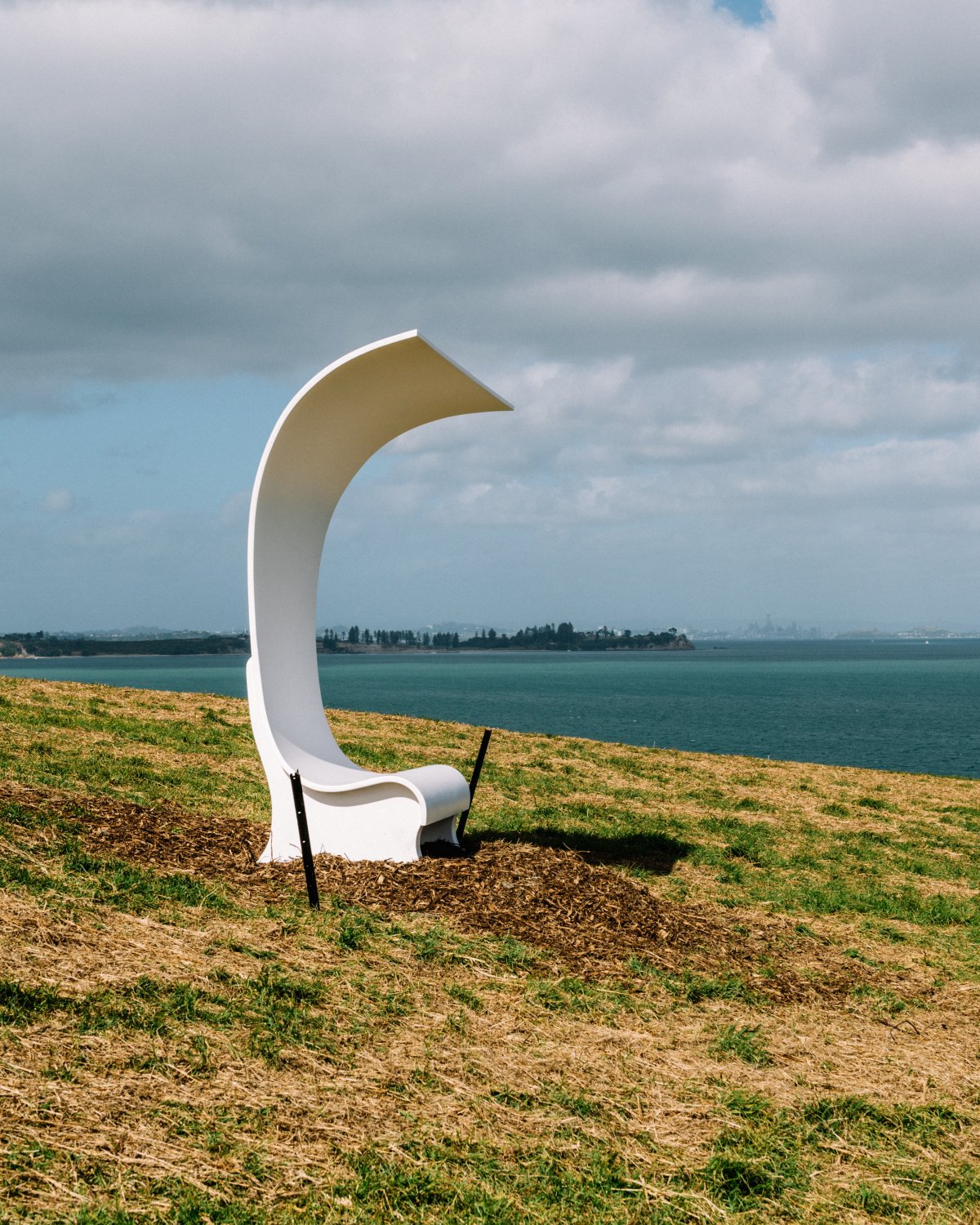
The Plum Tree, 2017
fibreglass, plums and performer
1,261 x 1,371 x 2,794 mm
Do you remember the plum tree? Red orbs, small and pert, darkening under the sun before dropping into the long grass where we would either find them or squish them between our toes, breaking apart the skin to open up the golden insides to the fading summer light. The sun reflected in our palms. Eat the sun! The sun has a stone! Spit it out! It will grow more suns! Eat as many as you can fit in your mouth. Three? I’m doing four! See the juice from the sun rolling down my chin. Trickling and spilling, and then barfing. Vomiting in the dry grass. Eyes welling up with the effort. Laughing and puking. Vomiting up the sun. Many suns. Bent over in the golden light, your face stroking the grass, you are a goddess of excess in the orchard puking out her guts; a body turned into a song with each contraction.
– Sriwhana Spong
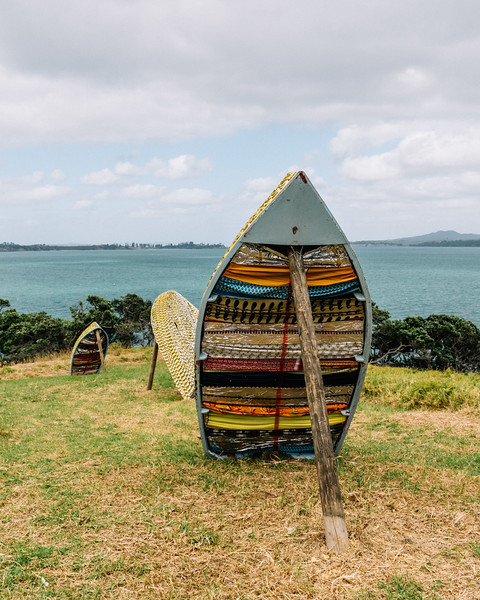
The Journey Of A Million Miles Begins With One Step – the Stories of Beyond Refuge, 2016-2017
4 up-cycled abandoned boats from Waiheke Island, Washi Origami paper, 2-channel sound, emergency blankets, saris, clay and wood
dimensions variable
The Journey is a partnership between Tiffany Singh and the Auckland Resettled Community Coalition (ARCC) that takes abandoned boats and utilises them as sound shells for refugee stories to be heard in a celebration of tolerance and diversity. Communicating real experiences is a way to humanise the politicisation of immigration within New Zealand and elsewhere and strengthen conversations around resettlement. Singh hopes that communicating personal stories is a way to redefine understanding of what it means to be a part of a community that comprises the settled and resettled. The work highlights the partner’s belief that sharing an important issue, whether it be a social, historical or political, can bring about change through the persuasiveness of a shared voice.
The refugee stories have been generously brought to life by Jennifer Ward Lealand, Michael Hurst, Lynn Freeman, Wallace Chapman, Frankie Stevens, Jesse Mulligan, Jaqui Clarke, Victor Rodger & John Hawkesby.
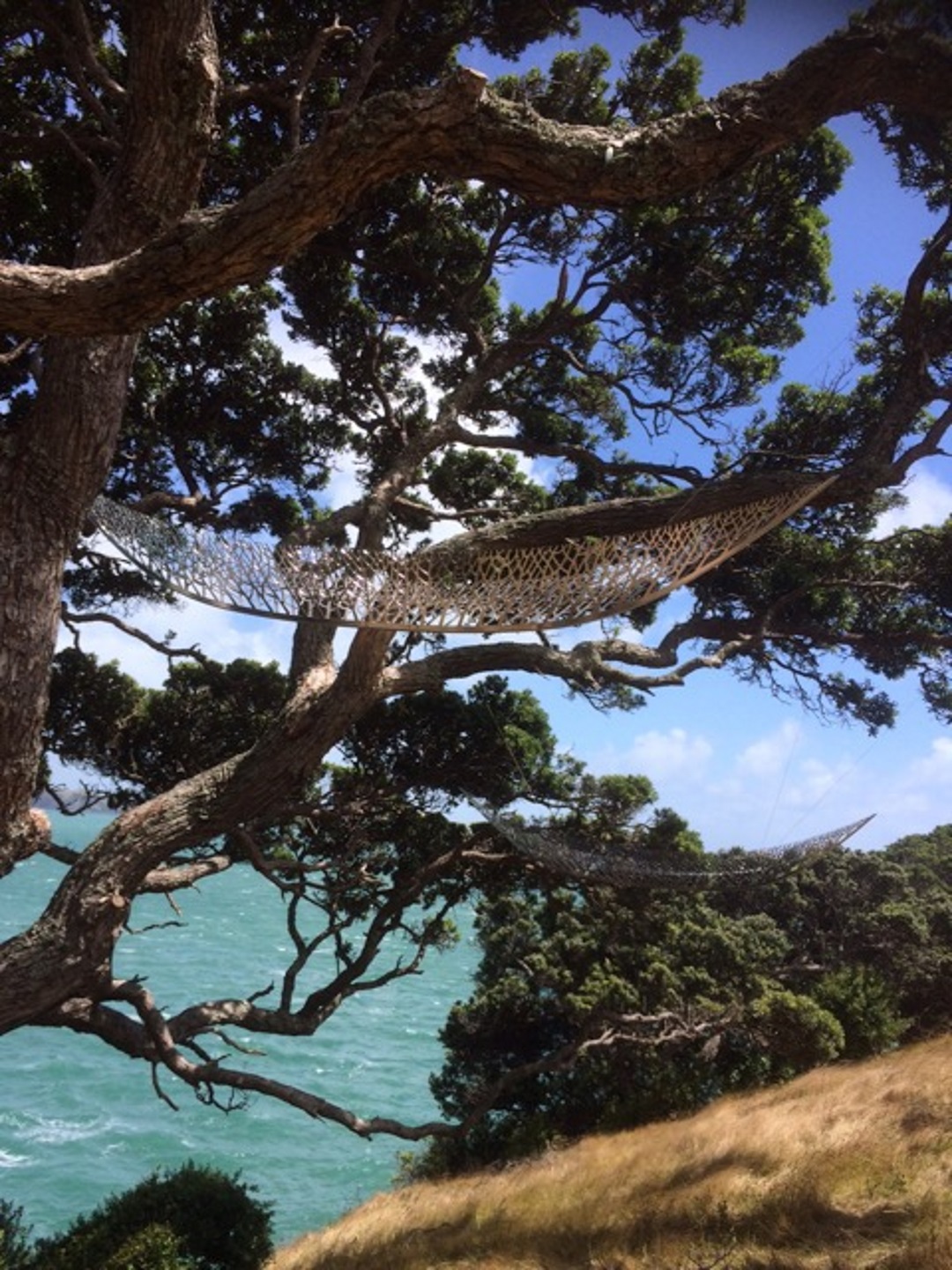
Phantom Fleet, 2016-2017
hand finished and electropolished Marine Grade 316 stainless steel, 3mm, removable Marine Grade 316 stainless steel base
850-450 x 560 x 4,500 mm
740-360 x 520 x 3,800 mm
680-280 x 450 x 3,420 mm
This is a fleet of filigreed and branching vessels that connect the nautical, botanical and anatomical worlds. While the forms suggest boat hulls and empty seedpods, associated with water and land, the installation makes reference to environmental migration, endurance, and loss. Suspended above the Waitemata, the vessels imply rising seas, and the urgency of addressing global warming. Appearing stranded in space, the empty vessels and their shadows allude to immigration and related situations of isolation and neglect. Surrounded by the elements of air, earth and water and exposed against the sky, Phantom Fleet also implies the presence of archetypal forms evoking ancient mythologies, and echo arrival and departure, survival and hope.
– Virginia King
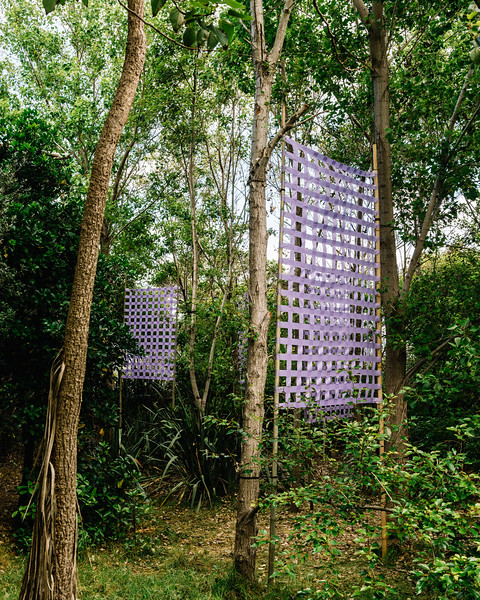
Keep Your Eyes Up, 2017
bamboo and Washi tape
5 parts, dimensions variable
My installations deal with materiality and transformation. My goal is to engage the audience by encouraging observing and ‘staying’ with the piece, made all the more poignant by its temporary nature. The work is dismantled at the end of its showing and exists simply to be observed and experienced in that one time.
With Keep Your Eyes Up I am interested in creating a ‘space’ that accentuates a state of stillness. The material is Washi masking tape, a very durable natural Japanese mulberry paper tape designed to withstand all weather conditions. Using tape, 6.5 meter bamboo poles and incorporating found rocks, I am evoking references to the Zen garden, but going beyond tradition by manipulating space and scale. I am interested in forming connections beyond cultural boundaries.
– Veronica Herber
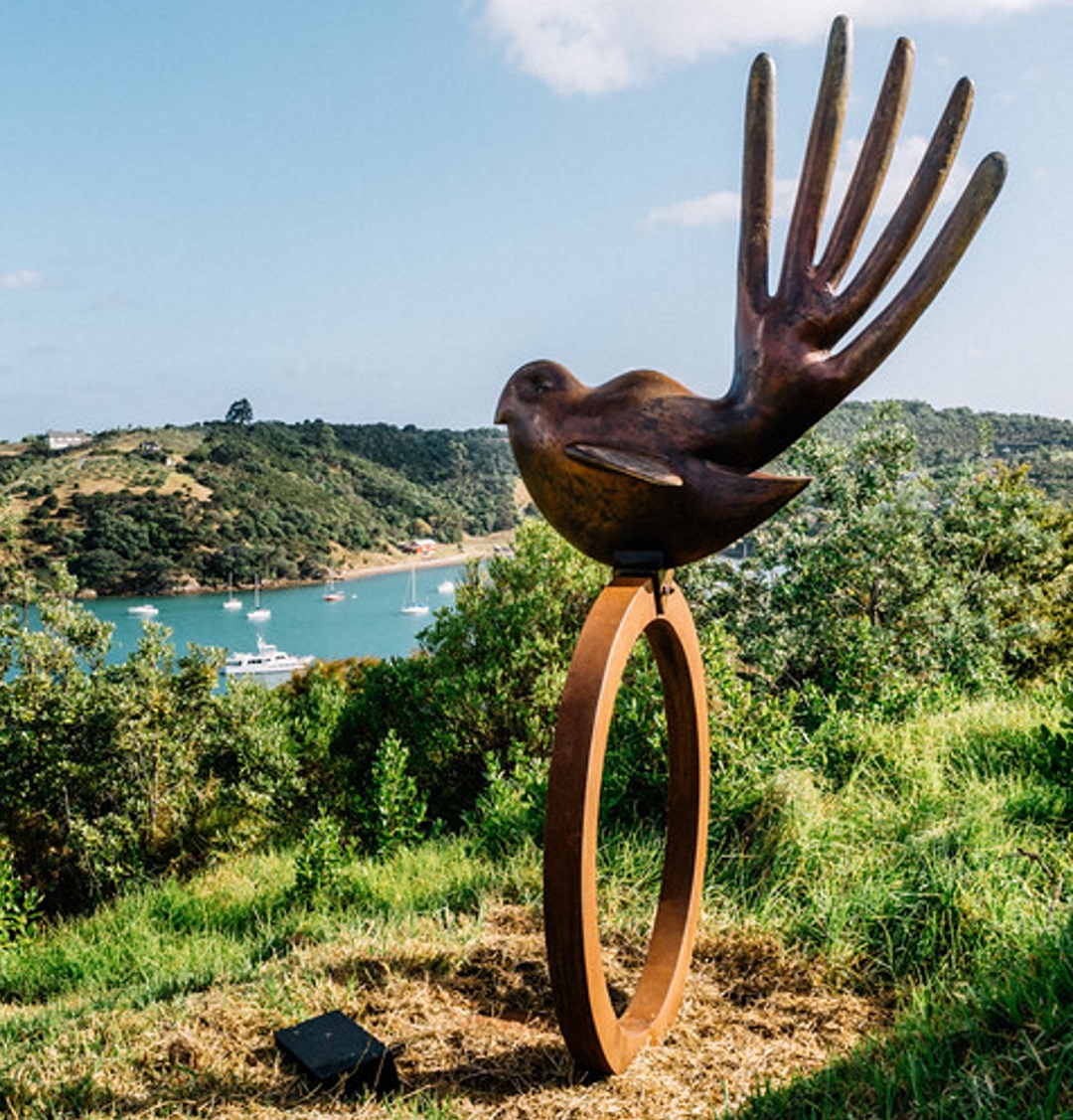
Fantail on ring, 2016
corten steel and cast bronze
2,400 x 1,300 x 1,300 mm
Native birds hold particular resonance in New Zealand culture and have emerged as somewhat emblematic of its national identity. Revered by Māori, their metaphorical significance is remembered in local legends, while contemporary bird imagery commonly represents the country’s unique wildlife and natural environment. Prior to the arrival of Polynesian settlers to Waiheke, the dense bush was a haven for noisy birds. Paul Dibble draws on this history, inserting larger than life native birds back into the landscape.
Fantail on ring captures the characteristics of piwakawaka (fantail). Following Dibble’s practice of combining local culture and Western art history, the bird is balanced on an elegant geometric perch, reminiscent of minimalist sculpture, highlighting how art, design and culture have abstracted from nature.
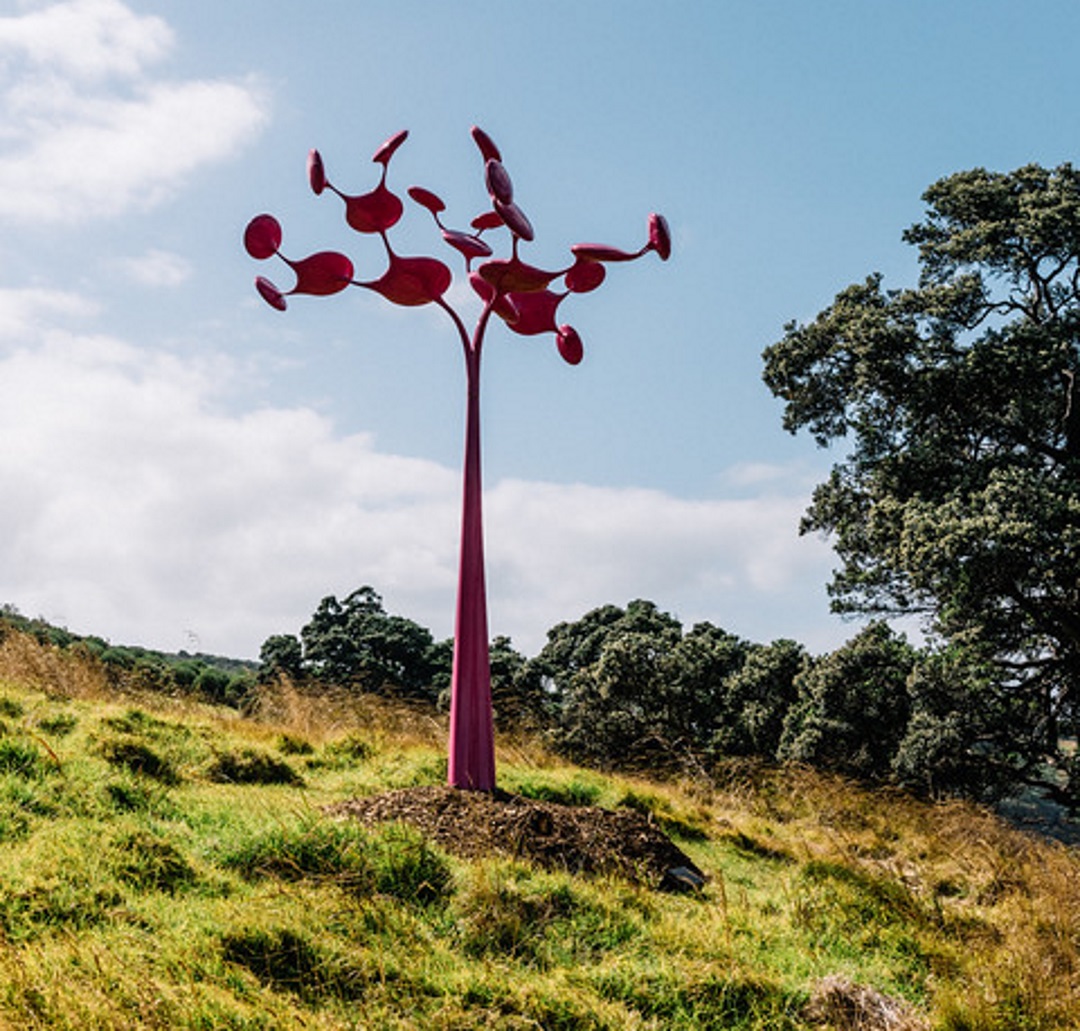
Forbidden Tree, 2016
carbon fibre and epoxy, industrial urethane, stainless steel and precision bearings
4,300 (extending to 5,300) x 3,700 (diameter) mm
Forbidden tree is like no tree in the natural world, it moves with the wind, creates shade, but drops no leaves. The forms are smooth and sensual, the colour is strident, unchanging with the seasons, a shrieking shock of pigment against nature. It needs no water, but is alive with movement.
Its tree shape is born of science and engineering, a mechanised form that steals from the wind to move its artificial branches against the sky.
Pluck the fruit from the forbidden tree in a future world where plants and animals have been replaced. The tree speaks of what awaits us in a distant but ever visible future.
– Phil Price
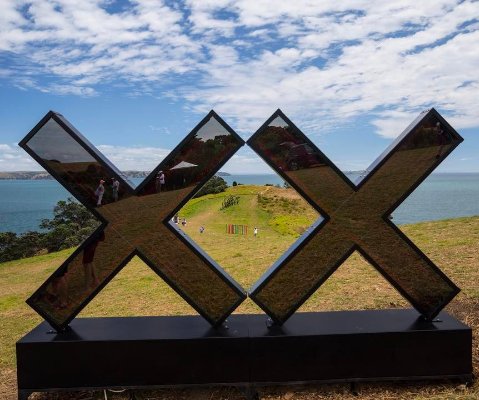
Kaokao, 2016
powder coated mild steel, wood, paint, mirror pane, neon and electricity
2,331 x 3,852 x 600 mm
KAOKAO is a pattern found in Māori tribal houses signifying fortitude and virility. It alludes to the haka stance assumed as a prelude to war or in celebration of victory. The kaokao is composed of two crosses with the bilateral inversion of the chevron horizontally referencing the ‘K’ figure associated with Polynesian art.
The diamond void acts as a portal for viewing the significant Whetumatarau headland to the north and ocean and islands beyond, alluding to the arrival and conquest through time by different iwi, followed by European settlement, logging, farming and tourism. Inevitably what was once Māori land has all but disappeared with the exception of Whetumatarau and the sculpture’s two crosses are a symbol of the two waves of settlement on Waiheke Island; Maori and European. KAOKAO stands as a beacon to remind people of a history of land alienation and waves of mana whenua that turned the foreshore of Matiatia into a wahi tapu that continues to unveil the bones of ancestors.
– Robert Jahnke
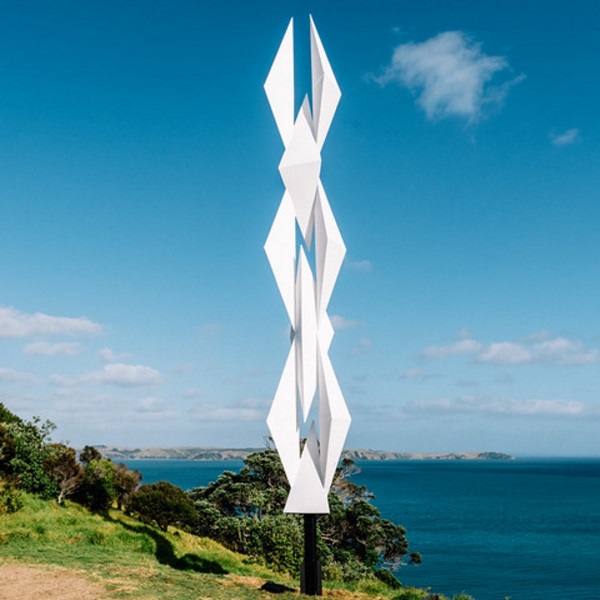
MANUESINA (White Bird and White Angel), 2017
steel and polymer
14,000 x 1,560 mm (variable)
MANUESINA (White Bird and White Angel)
…”I noticed this bird trapped in your imagination, so set it free”…
Restoring Balance
Manuēsina metaphorically interrogates our understanding of our world. Manuēsina extends our collective glimpses into our surroundings, defining a deeper understanding of our common links.
Manuēsina reflects Tāmaki Makaurau, as one of the biggest capital cities of the Pacific and echoes aspects of its unique knowledge, thinking, and practice. The sculpture’s form reflects this very unique cultural understanding.
Manuēsia is an artwork of tufunga tongi poliukamea (polymer-steel cutting) and is based on the old Tongan kupesi manulua (two-birds-flying). The constant movement between abstraction and representation is a permanent motion between time and space, and also between form and content. As with all of Sēmisi’s work, Manuēsia is therefore, four dimensional.
Manuēsina resonates across cultures, seeking to bring new light to the plight of environmental, psychological and social conflicts that enslave us in our everyday lives. Knowledge is contained in culture, communicated in language, and enlightens our self-awareness.
– Sēmisi Fetoki Potauaine
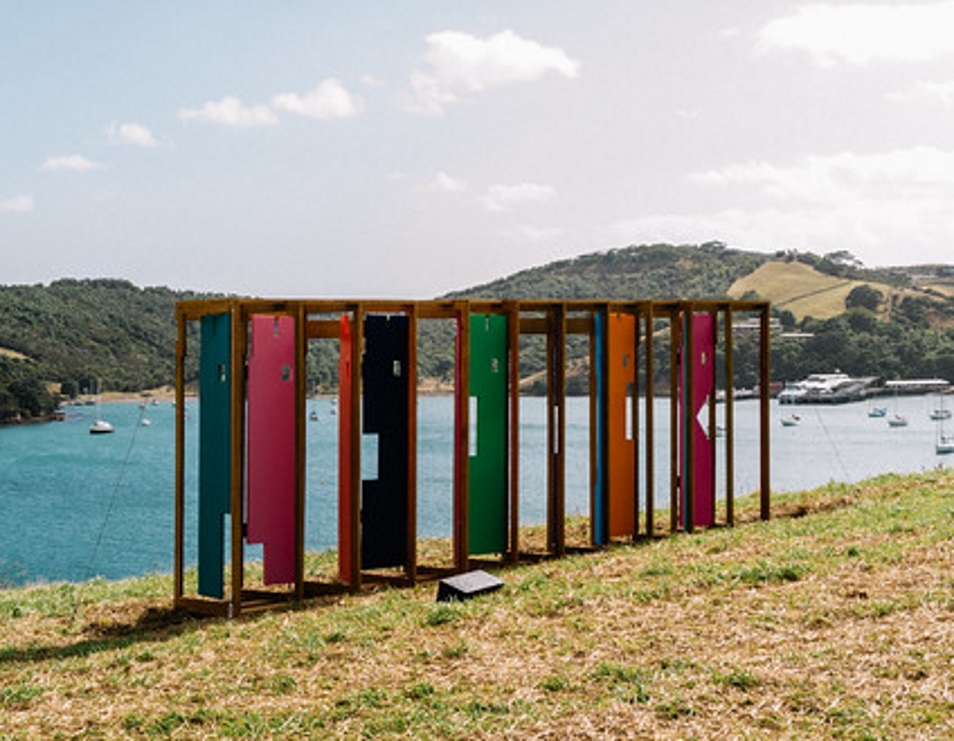
Twelve Intervals, 2016
plywood, metal fixings and acrylic paint
1,950 x 700 x 7,200 mm
Twelve Intervals explores an interactive threshold – how bodies transition from one point to another. In between, there is motion, physical engagement and a playfulness of colours and light. The work is a series of twelve wooden doors with geometric incisions and colour surface treatments, fixed to a light steel frame. Each door opens via a pivot hinge that allows fluidity around the direction of its rotation. In its default state, the audience can see all the way through the twelve doors to a vista, referencing French artist Marcel Duchamp’s Étant donnés, a tableau only visible through a pair of peep holes – a gesture that generates curiosity. Viewers reconfigure the work as they move through and doors are opened and closed. The title of the work refers to the equal spacing between each door, which, like twelve intervals on an equal-tempered instrument, are waiting to be played.
– Shannon Novak and Raimana Jones
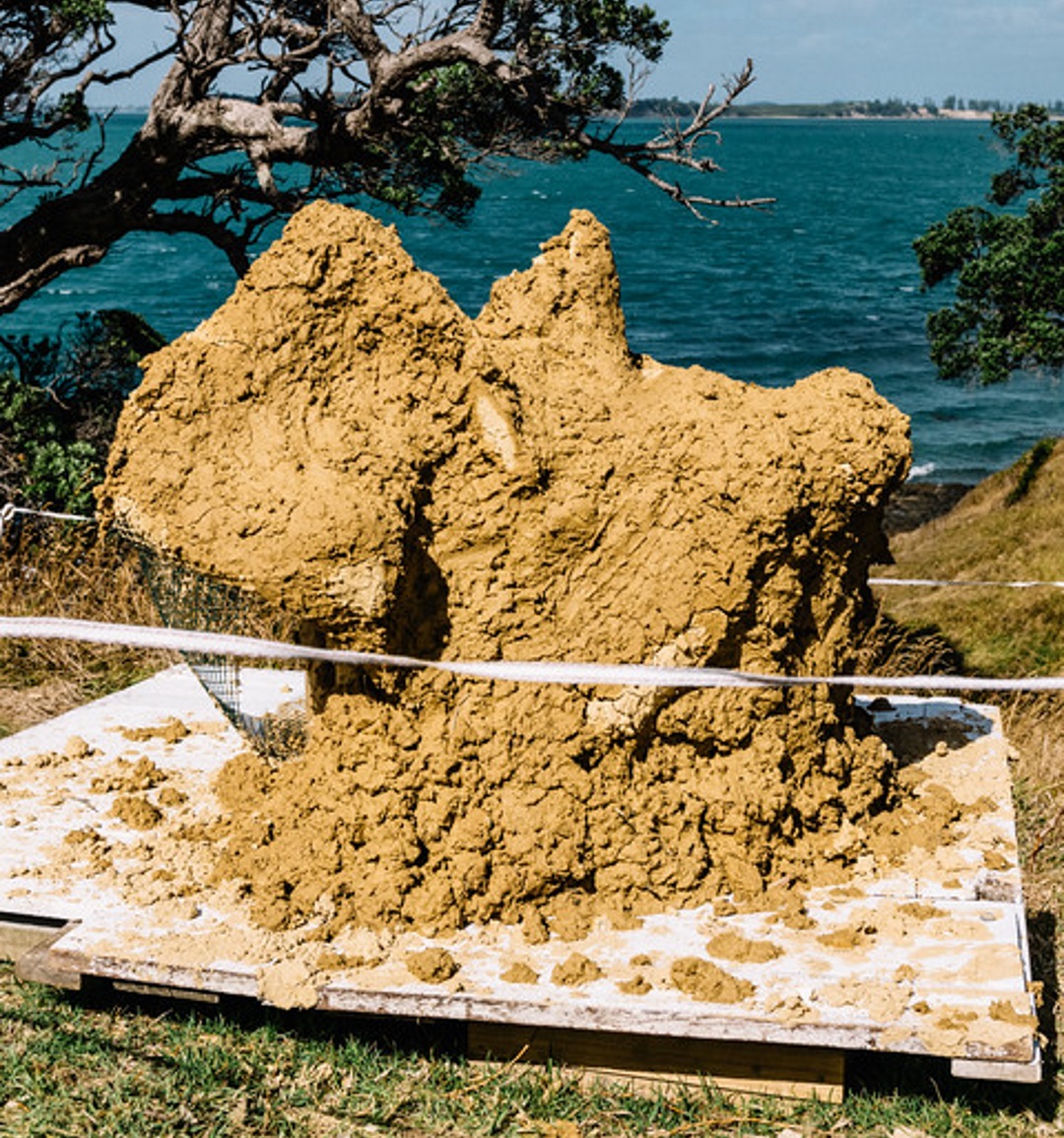
forms & other things, 2017
clay
dimension variable
forms & other things is a site-specific and performative artwork developed over the duration of headland Sculpture on the Gulf. Comprising a historic art material, this clay is sourced from around Waiheke Island. The work evolves over the event, the processes of its making being partly dependent on the artist’s physical ability to manipulate the clay by hand. Like many of Maloy’s past projects, time and duration are integral to the situation. Viewers are given an insight into the work as it develops and the creative process normally kept within the confines of the artist’s studio. forms & other things is in a perpetual state of flux across the event, from the beginning to the end of its life as an art work.










